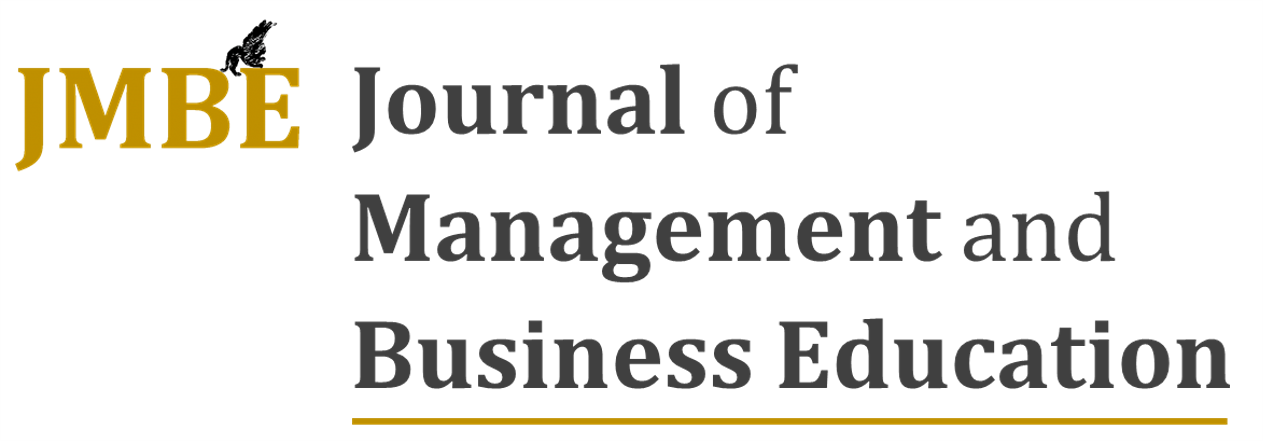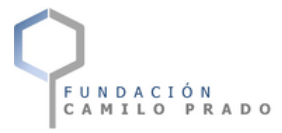Effect of small accounting class on learning effectiveness: a study among college students
DOI:
https://doi.org/10.35564/jmbe.2023.0023Keywords:
Small accounting class, class size, learning effectiveness, college students, Oman, small class, accountingAbstract
A larger class with more students will have fewer interactions between students and the teacher due to the teacher's inability to reach each student in a limited time. However, in a small class of ten or fewer students, one will have more opportunities to interact with their teacher. In accounting classes, interaction is one of the most essential aspects. Hence this study aims to explore the effect of Small accounting classes (conduct of a Small class and understanding of Small class) and learning effectiveness among College students across Universities in Oman. This study also measures the mediation effect of class size between independent variables (Conduct of small class, understanding of small class) with the dependent variable, learning effectiveness. A quantitative strategy will be used to collect data for this research. The researcher will use partial least squares structural equation modeling (PLS-SEM) software to examine the data. The study finds that the conduct of a small class significantly affects Learning effectiveness where it was P<0. 001, t=4.032. Likewise, understanding small accounting classes significantly affects Learning effectiveness, which was P<0. 01, t=3.232. However, Class size does not mediate the relationship between the conduct of small accounting classes and learning effectiveness. Likewise, Class size does not mediate the relationship between understanding small accounting classes and learning effectiveness.
Downloads
References
Bal-Taştan, S., Davoudi, S. M. M., Masalimova, A. R., Bersanov, A. S., Kurbanov, R. A., Boiarchuk, A. V., & Pavlushin, A. A. (2018). The impacts of teacher's efficacy and motivation on student's academic achievement in science education among secondary and high school students. EURASIA Journal of Mathematics, Science and Technology Education, 14(6), 2353-2366.
https://doi.org/10.29333/ejmste/89579
Bal-Taştan, S., Davoudi, S. M. M., Masalimova, A. R., Bersanov, A. S., Kurbanov, R. A., Boiarchuk, A. V., & Pavlushin, A. A. (2018). The impacts of teacher's efficacy and motivation on student's academic achievement in science education among secondary and high school students. EURASIA Journal of Mathematics, Science and Technology Education, 14(6), 2353-2366.
https://doi.org/10.29333/ejmste/89579
Bian, C., Qian, C., Yu, Y., & Tang, K. (2021). On the robustness of median sampling in noisy evolutionary optimization. Science China Information Sciences, 64, 1-13.
https://doi.org/10.1007/s11432-020-3114-y
Blömeke, S., Jentsch, A., Ross, N., Kaiser, G., & König, J. (2022). Opening up the black box: Teacher competence, instructional quality, and students' learning progress. Learning and Instruction, 79, 101600.
https://doi.org/10.1016/j.learninstruc.2022.101600
Butler, M. G., Church, K. S., King, G. H., & Spencer, A. W. (2021). Do Your Students Know What They Don't Know? An Accounting Competencies Strategy. Issues in Accounting Education, 36(4), 207-230.
https://doi.org/10.2308/ISSUES-19-083
Christensen, J., Harrison, J. L., Hollindale, J., & Wood, K. (2019). Implementing team-based learning (TBL) in accounting courses. Accounting Education, 28(2), 195-219.
https://doi.org/10.1080/09639284.2018.1535986
Churchill Jr, G. A. (1979). A paradigm for developing better measures of marketing constructs. Journal of marketing research, 16(1), 64-73.
https://doi.org/10.1177/002224377901600110
Crisp, G., & Oliver, B. (2019). Re-imagining graduate achievement and employability. In J. Higgs, G. Crisp, & W. Lett (Eds.), Education for employability (Vol. 1, pp. 73-82). Brill Sense.
https://doi.org/10.1163/9789004400832_006
Dejene, W. (2021). Academic cheating in Ethiopian secondary schools: Prevalence, perceived severity, and justifications. Cogent Education, 8(1), 1866803.
https://doi.org/10.1080/2331186X.2020.1866803
F. Hair Jr, J., Sarstedt, M., Hopkins, L., & G. Kuppelwieser, V. (2014). Partial least squares structural equation modeling (PLS-SEM) An emerging tool in business research. European business review, 26(2), 106-121.
https://doi.org/10.1108/EBR-10-2013-0128
Fornell, C., & Larcker, D. F. (1981). Evaluating structural equation models with unobservable variables and measurement error. Journal of marketing research, 18(1), 39-50.
https://doi.org/10.1177/002224378101800104
Franke, G., & Sarstedt, M. (2019). Heuristics versus statistics in discriminant validity testing: a comparison of four procedures. Internet Research.
https://doi.org/10.1108/IntR-12-2017-0515
Hair, J.F., Black, W.C., Babin, B.J. and Anderson, R.E. (2010) Multivariate Data Analysis, 7th ed., Prentice Hall, Upper Saddle River, NJ.
Hair, J.F., Hult, G.T.M., Ringle, C.M. and Sarstedt, M. (2017). A Primer on Partial Least Squares Structural Equation Modeling (PLS-SEM), 2nd ed., Sage Publications, Thousand Oaks.
Harfitt, G. J. (2012). How class size reduction mediates secondary students' learning: Hearing the pupil's voice. Asia Pacific Education Review, 13, 299-310.
https://doi.org/10.1007/s12564-011-9193-6
Jackson, D., & Edgar, S. (2019). Encouraging students to draw on work experiences when articulating achievements and capabilities to enhance employability. Australian Journal of Career Development, 28(1), 39-50.
https://doi.org/10.1177/1038416218790571
Jones, S. H., & Wright, M. (2011). Effect of cognitive style on performance in introductory financial accounting and the decision to major in accounting. Global Perspectives on Accounting Education, 8, 7-26.
Kirstein, M., & Kunz, R. (2015). A student-centered approach to teaching large classes: Friend or foe? Meditari Accountancy Research.
https://doi.org/10.1108/MEDAR-06-2013-0025
Latan, H. and Ghozali, I. (2015). Partial Least Squares: Concepts, Techniques and Application Using Program SmartPLS 3.0, 2nd ed., Diponegoro University Press, Semarang.
Lhutfi, I., & Mariani, R. (2020). Merdeka Belajar-Kampus Merdeka Policy: How Does It Affect the Sustainability of Accounting Education in Indonesia? Dinamika Pendidikan, 15(2), 243-253.
https://doi.org/10.15294/dp.v15i2.26071
Nunnally, J.C. (1978), Psychometric Theory, McGraw-Hill, New York, NY.
O'Dwyer, B. (2003). Conceptions of corporate social responsibility: the nature of managerial capture. Accounting, Auditing & Accountability Journal, 16(4), 523-557.
https://doi.org/10.1108/09513570310492290
Özpeynirci, R., Yücenurşen, M., Apak, İ., & Polat, Y. (2015). A comparative analysis of accounting education's effectiveness with the balanced scorecard method: A case study of KMU. Procedia-Social and Behavioral Sciences, 174, 1849-1858.
https://doi.org/10.1016/j.sbspro.2015.01.847
Özpeynirci, R., Yücenurşen, M., Apak, İ., & Polat, Y. (2021). A comparative analysis of accounting education's effectiveness with the balanced scorecard method: A case study of KMU. Procedia-Social and Behavioral Sciences, 174, 1849-1858.
https://doi.org/10.1016/j.sbspro.2015.01.847
Pollock, P. H., Hamann, K., & Wilson, B. M. (2011). Learning through discussions: Comparing the benefits of small-group and large-class settings. Journal of Political Science Education, 7(1), 48-64.
https://doi.org/10.1080/15512169.2011.539913
Prifti, R. (2020). Self-efficacy and student satisfaction in the context of blended learning courses. Open Learning: The Journal of Open, Distance and e-Learning, 1-15.
https://doi.org/10.1080/02680513.2020.1755642
Raines, S., Hedeen, T., & Barton, A. B. (2010). Best practices for mediation training and regulation: Preliminary findings. Family Court Review, 48(3), 541-554.
https://doi.org/10.1111/j.1744-1617.2010.01328.x
Redding, C. (2019). A teacher like me: A Review of the Effect of Student-teacher Racial/ethnic matching on teacher perceptions of Students and student academic and behavioral outcomes. Review of educational research, 89(4), 499-535.
https://doi.org/10.3102/0034654319853545
Reylan C, Renante N, Olores J, Padillo R, Gengen; Ramil M (2019) Attitudes, Study Habits, and Academic Performance of Junior High School Students in Mathematics; International Electronic Journal of Mathematics Education, v14 n3 p547-561.
https://doi.org/10.29333/iejme/5768
Sanjaya, W. (2013). Penelitian Pendidikan. Kencana Prenada Media Group.
Shehata, N., Mitry, C., Shawki, M., & El-Helaly, M. (2020). Incorporating Nearpod in undergraduate financial accounting classes in Egypt. Accounting Education, 29(2), 137-152.
https://doi.org/10.1080/09639284.2019.1704806
Stoller, A. (2018). Dewey's Creative Ontology. Journal of Thought, 52(3-4), 47-64. https://www.jstor.org/stable/90026737.
Straub, D. W. (1989). Validating instruments in MIS research. MIS Quarterly, 147-169.
https://doi.org/10.2307/248922
Taher, A., & Hubeis, A. V. S. (2009). Persepsi mahasiswa terhadap kesadaran gender. Jurnal Penyuluhan, 5(2).
https://doi.org/10.25015/penyuluhan.v5i2.11415
Umar, R. T., & Aliyu, M. M. (2014). Influence of study strategies on performance of business education students in financial accounting in federal universities in Nigeria. IOSR Journal of Business and Management, 16(1), 39-43.
https://doi.org/10.9790/487X-16153943
Wheaton, M. (2021). Why student engagement in the accounting classroom matters. Journal of Applied Learning and Teaching, 4(1).
https://doi.org/10.37074/jalt.2021.4.1.3
Zaiţ, A., & Bertea, P. S. P. E. (2011). Methods for testing discriminant validity. Management & Marketing Journal, 9(2), 217-224.
Downloads
Published
How to Cite
Issue
Section
License
Copyright (c) 2023 Journal of Management and Business Education

This work is licensed under a Creative Commons Attribution-NonCommercial-ShareAlike 4.0 International License.
License terms at: https://creativecommons.org/licenses/by-nc/4.0/legalcode




